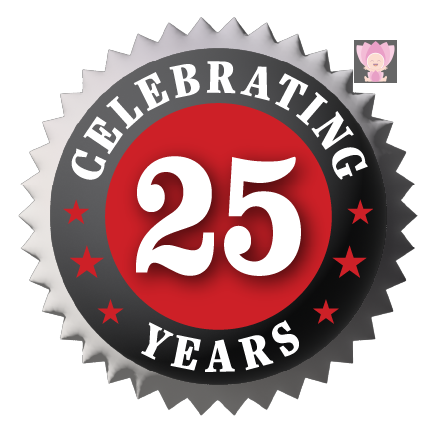“How I Finally Stopped Biting the Skin Around My Nails”

Ever since I can remember, I’ve chewed or picked at something. My mom tried to get me to quit when I was a kid, but this was back in the early 1970s, when body-focused repetitive behaviors (BFRB) weren’t exactly a hot topic of conversation. My mom was clever though, and tried to address my nail biting by way of a reward I couldn’t refuse: If I stopped biting my nails, I’d get a Barbie Dream House. Who would say no to that?
I have no idea how, but I was able to let enough of my nails grow back that I earned a rather posh place for my dolls. Plus, keeping my dolls busy kept my attention off my nails. It was all wonderful – until I gifted my Dream House to a classmate whose family had fallen on hard times. My dolls moved back into a box, and my nails whittled down again.
The years ticked by, and nail biting turned to cheek biting, then lip biting, then acne picking until settling into this current era of gnawing at the skin right next to my nailbeds. Here I find a wonderland of cuticle and skin to nip on whenever I’m stressed or bored. Unfortunately, this wonderland quickly bleeds after I’ve gone at it for a bit, and I begin to feel bad, as I have for decades, that I do such a thing.
[Read: 6 Myths — and Truths — About Body-Focused Repetitive Behaviors]
The Answer to Incessant Nail and Skin Biting? Fidget Rings
It took me 57 years to get an ADHD diagnosis. It took 57 years and three weeks for my BFRB to take a turn for the better. I have fidget rings to thank for that.
I had been reading about and experimenting with fidget toys for ADHD when I discovered the existence of fidget rings. I asked my cousin who knows all about the neurodiversity world if she’d ever heard of them.
“Oh, my friends love theirs,” she said, as if everybody knew about these jewelry inventions. I was late to the party! With that, I ordered a handful of size-seven fidget rings to check out the hype myself.
I experimented with different fidget ring mechanisms to determine which, if any, were more enticing to me than chewing. One popular design has a ring that rotates on top of a stationary ring. Another has interlocking rings that move in and out of each other right on my finger — perhaps my favorite design. Another design features a collection of small balls that slide around a thin band.
[From Readers: “The Fidgets That Engage My ADHD Brain”]
I couldn’t decide on just one, so I wear these three fidgets rings every day. I alternate ring fingers, slide them off and play with them like toys, and use them as creative self-soothing because of the different sensory experiences they provide — all within constant reach.
I can’t believe how well these inanimate objects have worked to curb my nail and skin biting. It seems to boil down to a few reasons. The rings act as my comfort objects and as tactile reminders that I don’t want to do this to myself — that I have the option to stop and reassess my urges. The rings are fancy and pretty, and make me feel that way, too — especially on the inside. I think this translates to a kind of self-acceptance.
It hasn’t been a straight path to fingertip calm. The urge to gnaw off a piece of protruding cuticle is as gargantuan as the protrusion is small. Sometimes I must be intentional about playing with my rings until the urge to bite dies down, which is a nice mindfulness exercise. Sometimes I’ll drift and end up nibbling on a finger or two, but I’m able to pause more frequently now and turn my attention to my rings.
While the rings have been helpful, my stress and urges are noticeably better when I practice other stress-reducing habits, like meditation, exercise, short 10-minute walks outside, and perspective shifts.
When I think about all the ways I’ve grown and come to understand myself over the past several years, this change with my BFRB is the biggest surprise. Who would have thought that the first meaningful shift in a lifetime of picking, chewing, and shame would come down to three sterling silver rings?
Fidget Rings for BFRB: Next Steps
 CELEBRATING 25 YEARS OF ADDITUDE
CELEBRATING 25 YEARS OF ADDITUDE
Since 1998, ADDitude has worked to provide ADHD education and guidance through webinars, newsletters, community engagement, and its groundbreaking magazine. To support ADDitude’s mission, please consider subscribing. Your readership and support help make our content and outreach possible. Thank you.
















Leave a comment